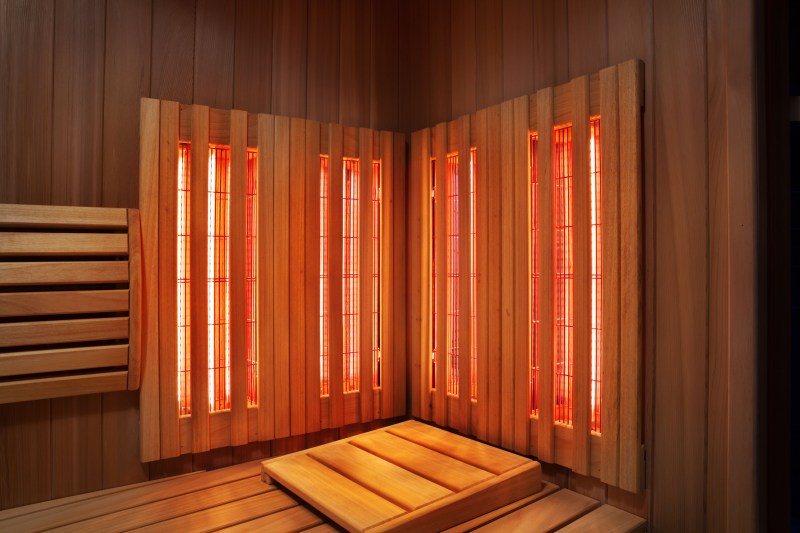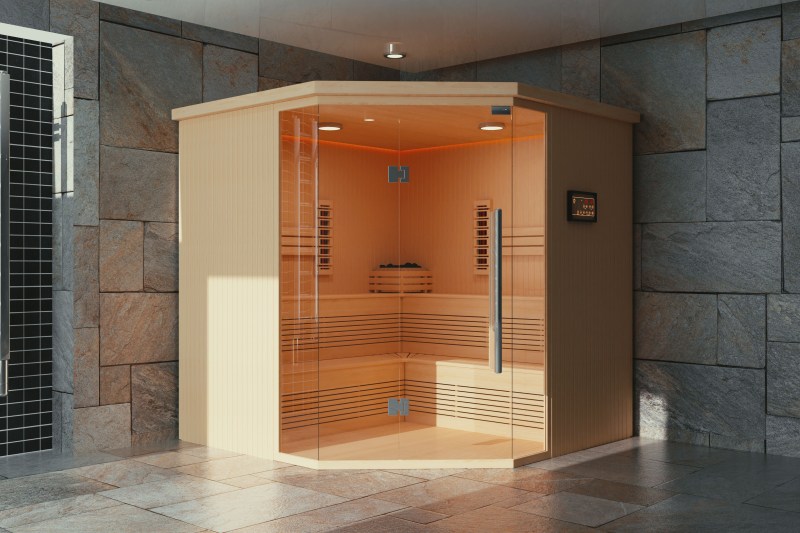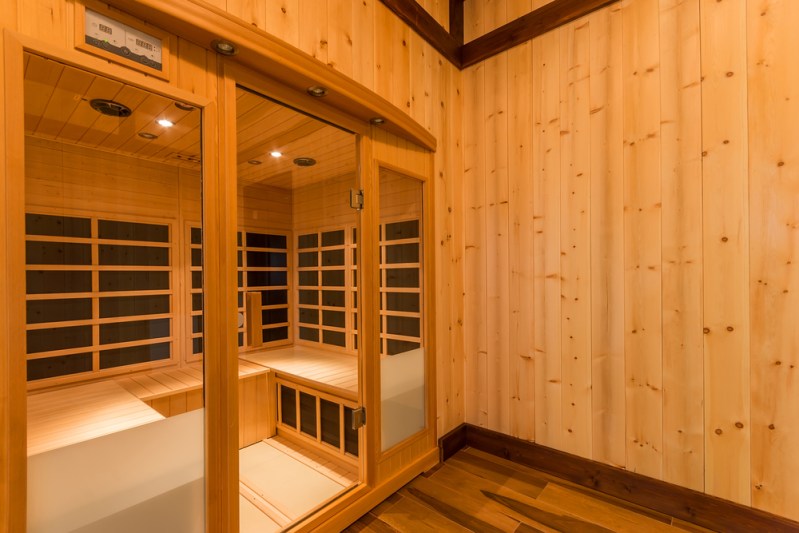
An infrared sauna is a type of sauna that uses infrared heaters to emit infrared light directly onto the body. This is known as heat therapy. Unlike traditional saunas that heat the air to warm the body, infrared saunas use infrared radiation to penetrate the skin and heat the body more directly. This means you sweat much more at a lower temperature, making the practice much more relaxing.
Infrared light is a part of the electromagnetic spectrum, and it comes in three main wavelengths: NEAR-infrared, MID-infrared, and FAR-infrared. Infrared saunas are usually built with one of these wavelengths in mind and may even be designed to emit a combination for the best results.
Regardless of the type of infrared sauna, all offer a more tolerable heat than traditional saunas, making them a popular choice for people seeking the benefits of heat therapy and relaxation. Just make sure that the one you purchase is a low-EMF, meaning it has a low electric magnetic field. High EMF saunas have been known to cause health risks, so avoid these. If the sauna you’re looking at does not specifically say low-EMF in the listing, it’s probably high-EMF.

Different types of home infrared saunas
Infrared saunas come in various sizes, from small personal units to larger cabins that can accommodate multiple people. The sauna’s interior is usually made of wood, and the infrared heaters are strategically placed to ensure an even heat distribution.
NEAR infrared saunas, MID infrared saunas, and FAR infrared saunas are all types of infrared saunas that use different wavelengths of infrared light to heat the body. The main difference between these types of saunas lies in the depth of penetration of the infrared light.
The benefits of NEAR infrared saunas
NEAR saunas are named after the infrared wavelength, which is shorter than the other two options. Saunas with just NEAR wavelengths are rare, so you will usually find them paired with either MID or Far. NEAR wavelengths are presumed to have potential therapeutic effects on cellular regeneration (wound healing) and pain relief. It’s important to note that there have not been many studies on the NEAR infrared sauna, so not many claims online have been scientifically proven. Here are a few facts and speculations about NEAR infrared saunas:
- Wavelength: The NEAR sauna utilizes shorter wavelengths of infrared light, ranging from 700 to 1200 nanometers.
- Benefits: NEAR saunas can penetrate just under the epidermis. This penetration is believed to accelerate healing, improve the appearance of your skin, reduce aging, and increase your immunity. NEAR light may also reduce pain in muscles and joints.
- Specific uses: NEAR saunas are sometimes used in clinical settings for therapeutic purposes, such as wound healing and pain management.
The benefits of MID infrared saunas
MID saunas offer a middle ground between NEAR and FAR saunas, providing moderate penetration and benefits for muscles and joints. This kind of sauna raises your core temperature, so it’s a little easier for you to start sweating.
- Wavelength: MID saunas utilize medium-length wavelengths of infrared light, ranging from 1400 to 3000 nanometers.
- Benefits: MID saunas offer benefits similar to NEAR saunas, but to a more substantial extent. Primarily, MID saunas are used for increasing blood circulation and reducing inflammation and chronic pain.
- Specific Uses: MID saunas are often considered a middle ground between NEAR and FAR saunas, providing a balanced approach to infrared heating.
The benefits of FAR infrared saunas
If you know you can stand the heat, FAR infrared saunas will get you sweating like never before. Unlike a NEAR sauna, which usually isn’t enough to get you sweating, the FAR wavelength penetrates deeply for maximum detoxification. This type of infrared sauna has been studied the most, and many doctors endorse it for its health benefits.
- Wavelength: FAR saunas use longer wavelengths of infrared light, ranging from 3000 to 1,000,000 nanometers.
- Benefits: FAR saunas primarily heat the surface of the skin and are effective at promoting sweating and detoxification. This means you may experience a clearer complexion if you have acne-prone skin. They may also help improve circulation and relaxation.
- Specific Uses: FAR saunas are popular for general wellness and relaxation, as well as for their potential benefits in detoxification.

Conclusion
If you hate sweating and are looking for a home infrared sauna to help with healing injuries, consider a NEAR infrared sauna. That said, those searching for a heavy sweat session might benefit most from a FAR. For a middle-ground option, try the MID. Or, if you want to experience all three wavelengths at once, try out a full-spectrum sauna.
It’s important to note that the specific therapeutic claims of infrared saunas are still being researched, and individual experiences may vary. Individuals with certain health conditions, such as cardiovascular issues, should consult their healthcare provider before using saunas to ensure safety and appropriateness. If you ever feel dizzy, shortness of breath, or any other kind of discomfort, it’s best to step out.
Editors' Recommendations
- Sea moss: the superfood you shouldn’t miss out on
- The absolute best saunas for home use
- Cream or sugar? New study finds adding one of these to your coffee is associated with weight gain
- Stay fit this Halloween: An RD tells us which treats will help you avoid the dreaded holiday-season weight gain
- Pilates at home vs. at the studio: Which is the best option for you? We help you decide




